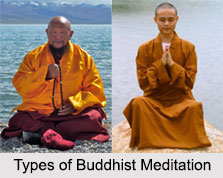 History of Hypnosis goes back a rather long way even though its origins are shrouded in mystery. The ancient Egyptians have been associated with the earliest known examples of hypnotism. They are known to have used a form of it in their dream temples. There are some ancient Egyptian paintings that depict an apparently sleeping person with some others who seem to be making hypnotic passes over them. One of the most concrete sources of the existence of hypnosis in early Egypt is found in the famous 3rd century CE Demotic Magical Papyrus which was discovered in the 19th century in Thebes. The 16th column of this papyrus gives instructions for preparation of a lamp which is to be used in a ritual. It states that "You take a boy and sit him upon another new brick, his face being turned to the lamp and you close his eyes and recite these things which are written above down into the boy`s head, seven times. You make him open his eyes. You say to him: `Do you see the light?` When he says to you, `I see the light in the flame of the lamp`, you cry at that moment, saying `Heoue` nine times. You ask him concerning everything that you wish." This indicates the presence of the hypnotic practice in ancient Egypt. The ancient Greeks too used hypnosis to cure their sick. Seers at the Greek oracle of Delphi used self-hypnosis.
History of Hypnosis goes back a rather long way even though its origins are shrouded in mystery. The ancient Egyptians have been associated with the earliest known examples of hypnotism. They are known to have used a form of it in their dream temples. There are some ancient Egyptian paintings that depict an apparently sleeping person with some others who seem to be making hypnotic passes over them. One of the most concrete sources of the existence of hypnosis in early Egypt is found in the famous 3rd century CE Demotic Magical Papyrus which was discovered in the 19th century in Thebes. The 16th column of this papyrus gives instructions for preparation of a lamp which is to be used in a ritual. It states that "You take a boy and sit him upon another new brick, his face being turned to the lamp and you close his eyes and recite these things which are written above down into the boy`s head, seven times. You make him open his eyes. You say to him: `Do you see the light?` When he says to you, `I see the light in the flame of the lamp`, you cry at that moment, saying `Heoue` nine times. You ask him concerning everything that you wish." This indicates the presence of the hypnotic practice in ancient Egypt. The ancient Greeks too used hypnosis to cure their sick. Seers at the Greek oracle of Delphi used self-hypnosis.
In India, Rishis and Yogis used the technique of self-hypnosis to still their minds during meditation. The Indian equivalent of hypnosis is said to be Sammohan. Sammohan Shakti has been practised in India since Vedic times. It may be described as the power of attraction. Sammohan is believed to be inborn in every human being.
Austrian doctor named Franz Anton Mesmer, a German healer, that the therapeutic effects of hypnotism were discovered and put into practice. He believed that he could cure people without medicine and surgery as there was a magnetic force which could regulate the flow of magnetic fluids in people to produce cure" border="1">Hypnotism as a scientific discipline developed in the west in the 18th century. It was due to the efforts of an Austrian doctor named Franz Anton Mesmer, a German healer, that the therapeutic effects of hypnotism were discovered and put into practice. He believed that he could cure people without medicine and surgery as there was a magnetic force which could regulate the flow of magnetic fluids in people to produce cure. In many cases his cures were successful and this method of healing came to be known as Mesmerism.

For the purposes of treatment he `magnetised` a tree from which hung ribbons or cords for his followers to hold and receive his magnetic therapy. Another method he used was to fill a large tub with water, containing bottles of iron filings. Protruding out of the tub were iron rods which the common-folk held onto. Many of the patients had violent seizures or fell into deep sleeps which could cure many different kinds of ailments.
During the time, despite the success of his method, his methods earned the ire of the medical community. It was concluded that Mesmer`s practices and theories were worthless. In order to escape harassment he escaped to Vienna and continued his practice there.
There were a number of others who followed his methods. There was a Doctor Jean Martin Charcot, a French neurologist who successfully treated mentally ill patients using hypnosis. Even Freud, the celebrated master of the mind, used hypnosis on his patients.
The world`s first operation on a patient induced into a trance-like state was performed in the year 1821. With anaesthetics like ether or chloroform yet to be introduced, this was a breakthrough. Dr John Elliotson made successful use of the method in England.
The practice of hypnotism in medicine gradually spread to India and through Scottish surgeon Dr James Esdaile (1808-1859), who worked in Kolkata, India. He began using mesmerism to anaesthetize patients during surgery. It was Doctor James Braid of Scotland who coined the term `hypnosis` from the Greek word hypnosis meaning sleep. He used verbal suggestions on hypnotized patients with remarkable effect, calling it `hypnotherapy`.
Hypnotherapy as a practice continued to grow and flourish and has found a number of supporters and practitioners today. It has proved useful in a number of different areas such as sports, physical therapy and rehabilitation, dermatology, entertainment, education, surgery and even dentistry.



